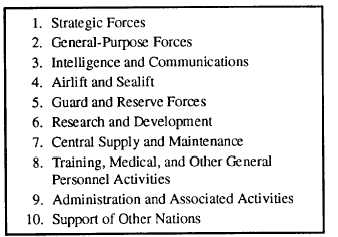| |
CHAPTER 2
APPROPRIATION ACCOUNTING
Appropriations are broad categories or blocks of
funds authorized by Congress to be used for specific
purposes by various government departments. Because
appropriations are made for specific purposes and
cannot be expended for other purposes, accounting for
appropriations is an essential part of the Navy’s
financial management system. In fact, it is the
appropriations authorized by Congress to be made from
the general fund that support the Navy’s operations and
strategic capability.
The purpose of this chapter is to examine the
various components of appropriation accounting. As a
senior Disbursing Clerk (DK), you will become directly
involved in this area of responsibility because you will
be required to report all disbursements and collections
accurately by the appropriation itself and by the various
components of the accounting data. The information in
this chapter is designed to provide you with an overview
of these responsibilities and procedures. After studying
this chapter, you should be able to describe the
components of appropriation accounting and their
individual and collective roles in the Navy’s financial
management system.
NAVY FINANCIAL
MANAGEMENT
Before discussing the components of the
appropriations and the related accounting data, let’s
take a look at some basic aspects of the Navy’s financial
management system, such as the fiscal year and the
Five-Year Defense Program (FYDP).
FISCAL YEAR
The fiscal year for the federal government begins
on 1 October of each calendar year and runs through 30
September of the following calendar year. The fiscal
year is designated by the calendar year in which it ends.
For example, the fiscal year for 1997 will begin on 1
October 1996 and will end on 30 September 1997.
Although the time frame for a fiscal year is the 12
months from 1 October of one calendar year through 30
September of the following calendar year, the
operational scope of the fiscal year is much broader.
During a fiscal year, several different transactions will
take place. Some of these transactions will be related
to the current fiscal year. Others, however, will be
related to the previous fiscal year. In fact, some will
even concern future fiscal years. This means that while
transactions for the current fiscal year are being
processed, appropriations for previous fiscal years are
still being cleared or settled. Simultaneously, the
planning and development of budgets for future fiscal
years may also be taking place. This is why you, as a
senior DK, must be aware of all transactions associated
with budgeting, appropriation accounting, and the
significance of the fiscal year. The dimensions of the
Navy budget are indeed broad for any one fiscal year.
This is one of the reasons that the Department of
Defense instituted the FYDP.
THE FIVE-YEAR DEFENSE PROGRAM
The FYDP establishes the planned force structure
and financial levels for the military departments for a
5-year period. To allow for the making of careful
decisions, the FYDP provides a method by which the
information the military departments will use for
planning, programming, and execution can be
accumulated, grouped, and controlled according to
specific meaningful categories called programs. At the
time this training manual (TRAMAN) was published,
the FYDP consisted of the 10 programs shown in figure
2-1. These 10 programs provide a framework from
which the Navy develops its annual budget requests.
Figure 2-1.-Ten programs used in the Five-Year Defense
Program.
2-1
|

